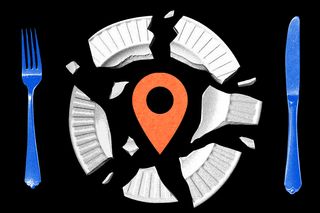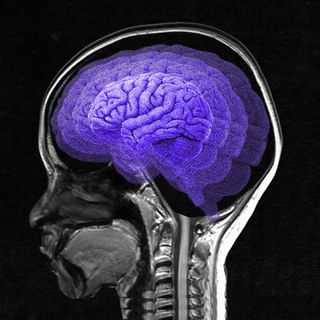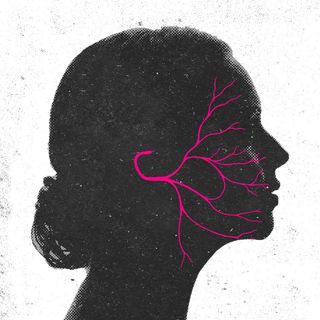
For People With Poor Impulse Control, Instant Food Delivery Apps Can Kickstart Disordered Eating
“The doorstep availability of the food in a just few minutes has made it more challenging [to not give in and order].”

Much has been written about how instant food and grocery delivery apps like Swiggy and BlinkIt — as part of India’s burgeoning and exploitative gig economy — afford comfort and convenience to their urban customers on the backs of overworked, underpaid delivery executives. However, what their critics often ignore — and, unsurprisingly, their admirers choose not to acknowledge — is how the 10-minute delivery promise can adversely impact some of the same urban consumers whose lives they’re seemingly designed to simplify.
People who struggle with impulse control — either due to ADHD and ADD, OCD, anxiety, bipolar disorder, different kinds of personality disorders, or, more obviously, eating disorders — often end up suffering because of the “easy access” instant food delivery apps offer. “Some individuals may find it more difficult [to resist] impulses related to unhealthy food choices, and low self-control and high impulsivity have been suggested to be linked to these behaviors… The increase in availability and accessibility of ready-to-eat food options have resulted in a… higher consumption of more processed, energy-dense, and less nutritious foods,” notes a study from May 2020.
“[T]he instant delivery apps have brought a lot of ease into my life… At the same time, it has kind of worsened my struggle — because it leads to a lack of money in the long run,” says M., 26, who lives with ADHD. As yet another individual on the attention-deficit spectrum explained, for those who struggle with impulse control, these apps can be “nothing less than a living nightmare.”
However, the downsides of food delivery apps’ pervasiveness aren’t just restricted to dented financial savings. T.G., 26, who has a history of disordered eating, besides poor impulse control, adds, “A lot of what I order isn’t healthy, and it isn’t good for my mental or physical health. Especially so, since I also have polycystic ovary syndrome (PCOS) and fibromyalgia, which makes it important for me to keep a check on what I’m eating.”
My experience, too, is much like M.’s and T.G.’s. My struggle with impulse control due to ADHD, and my restricted dietary options due to autism-triggered sensory issues pertaining to food, drove me into ordering so many fries and nuggets over the years that my recent routine bloodwork came back with a diagnosis of high cholesterol. To top it off, there have been several points in the last five years when a singular comment about how I’ve gained a few extra kilos drove me to either puke after meals or over-consume laxative churans so I could eject the fried, greasy snacks that I wasn’t able to resist ordering. Since my high cholesterol diagnosis, though, I’ve been strongly advised against eating unhealthy food. But my poor impulse control, obviously, hasn’t automatically dissipated.
Related on The Swaddle:
The Unique Factors That Contribute to Eating Disorders in India
And so, the ceaseless notifications from the delivery apps, and their incessant advertisements on TV and on social media, have made it colossally challenging for me to take care of my health. Further, the warm color palette most of the delivery apps employ is meant to trick us into feeling hungry by raising our heart rates — making it all that more difficult to fight off our impulsive urges. And come to think of it, Zomato is red, Swiggy is orange, BlinkIt is yellow — all warm colors.
Further, Dr. Ankita Agarwall, who has “stressful overeating habits and it’s because of anxiety and emotional mismanagement issues,” points out, “the doorstep availability of the food in a just few minutes has made it more challenging [to not give in and order].” Evidently, the 10-to-15-minute doorstep delivery promises don’t just put the delivery executives’ lives at risk — although that is, arguably, much more threatening — they also exploit the debilitating lack of impulse control that many of its consumers live with.
In other words, it’s the solemn vow of ease that instant food delivery apps swear by, that is quickly transforming into a bane of varying proportions. As T.G. points out, “Earlier, even if you ordered food, you had to have physical cash to pay for it. And if you didn’t have the cash, you had to go to an ATM and withdraw money. But now, everything is easily done through online banking or UPI.” According to her, that makes it all the more difficult to resist the temptation to have cooked, delicious meals make their way to her plate in under ten minutes through just a few clicks.
To impulsive minds, the sheer variety that the food delivery apps present can also be overwhelming. Kabeer, 27, who lives with ADHD, says that in addition to impulse control, “One more thing I struggle a lot with is the difficulty to choose out of so many options. Earlier, there were fewer restaurants that offered takeaway, and one had to call the place to get the food delivered. Now, I just get overwhelmed and end up ordering extra and more expensive food than what I would have ordered in general.” Basically, almost everything that has been packaged as a perk by the apps, isn’t so for many.
This isn’t to say that the concept of instant food delivery itself is rooted in evil and will be the downfall of society as we know it. Moreover, it’s futile to deny that they’ve, indeed, made lives easier for more than just neurotypical, able-bodied customers. As M. notes, “While [my] struggle with impulse control impacts me 40% of the time; 60% of the time, though, I do prefer instant delivery because I get more exhausted throughout the day than [neurotypical] people do… I went into the kitchen the other day to make some khichdi for myself, and suddenly realized I had no strength. So, I ended up ordering khichdi.”
Related on The Swaddle:
A Plus‑Size Model Shares She’s Anorexic, Proves Appearance Isn’t Sole Marker of Eating Disorders
T.G., too, believes the advent of the apps ensures she is, at least, fed. “Once during a depressive episode, I got dehydrated because the idea of cooking or making something was too much effort. I didn’t even refill my water bottle because it seemed like a lot of work.” It is at times like these that food delivery apps can truly be a boon – a savior even. Just like M., T.G., too, struggles with both impulse control and fatigue. While instant food delivery is almost a knight-in-shining-armor for people struggling with the latter, it can be a curse for those with poor impulse control — especially when coupled with health conditions like high cholesterol and PCOS, both of which are fairly common among Indians.
While one can escape the relentless bombardment of wittily-worded notifications aimed at goading customers into ordering food every other hour simply by muting the apps, escaping their ads is far easier said than done in an age where we’re almost constantly fixated on one screen or another. “[I]t has become a compulsive behavior to order [even though] it comes with an unwelcome, intrusive feeling of guilt… as my metabolism is weaker than what is typical for someone of my age, and I run the risk of having several health-related problems in the future,” says Rishi, 24, who lives with OCD.
Perhaps, then, the solution lies in developing a marketing system that does provide people with the access they might direly need — while ensuring that consumers disadvantaged by a lack of impulse control aren’t unfairly tricked, and delivery executives, of course, aren’t exploited. But investing in research and development to come up with a model that’s a win-win for all the stakeholders is unlikely to be a priority for the companies since the status quo benefits them; basically, they’re already winning. At the end of the day, what people behind the apps care about is neither the customers whose demands ensure their survival in this competitive economy, nor the delivery executives whose toils enable them to meet the customers’ demands.
So, then, it seems we’re entirely on our own. According to psychotherapist Zohra Master, an associate fellow, and supervisor from the Albert Ellis Institute, there might not be an easy solution, however, to the disordered eating habits that the pervasiveness of instant food delivery apps encourages. Master explains that we continue to seek quick and easy fixes to being upset through the instant gratification these apps provide, “the neural connection of buying something with feeling better every time we’re upset gets stronger and stronger [driving us] to be more and more impulsive as time goes by.”
While muting notifications and having fewer apps on one’s phone can certainly help, they’re only behavioral solutions. What would help is perhaps breaking the pattern at the “core level of our thinking systems.” So, according to Master, the long-term solution is to break the pattern, which can be extremely discomforting, at first, due to “frustration intolerance” that’s likely to be triggered by depriving our brains of something it’s used to. To deal with that more effectively, Master suggests reminding ourselves of the reasons why we don’t want to indulge in the instant gratification — “why it is worth it to go through the discomfort of that gratification for a bigger gain” — be it due to our health, the guilt that follows, or the fact that we may be trying to eat nutritiously and stay fit, whatever it may be.
Devrupa Rakshit is an Associate Editor at The Swaddle. She is a lawyer by education, a poet by accident, a painter by shaukh, and autistic by birth. You can find her on Instagram @devruparakshit.
Related


Anorexia Changes People’s Brain Structures, New Study Shows
